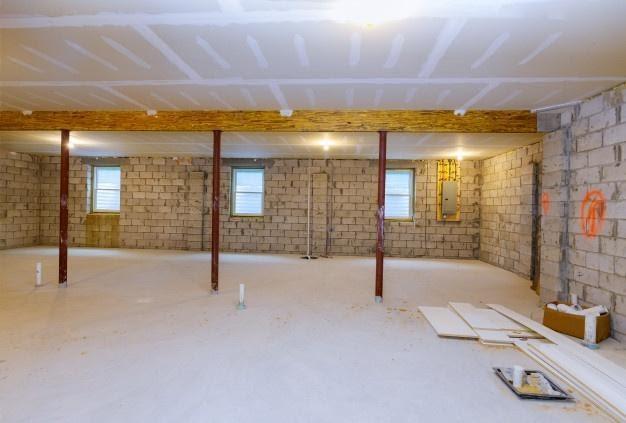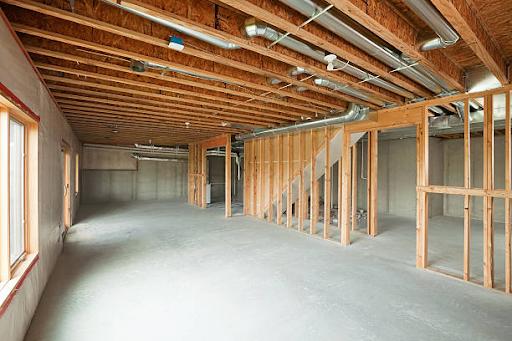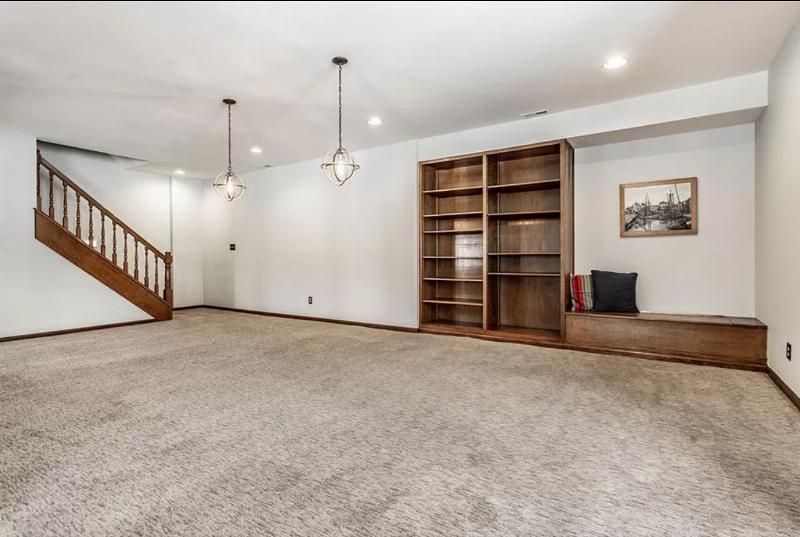Basement Remodels with Low Ceilings
A perfect basement remodels with Low ceilings can entirely transform your basement space into a living masterpiece fit for any household purpose. Unlike the classical times when basements were commonly used as a store or a garage, modern home remodeling designs and styles make it possible to use them for any purpose. But, it’s not without a challenge.
One of the most common challenges homeowners face when finishing their basement is dealing with low ceiling heights. If you live in a home built in the 1990s and beyond, you may be dealing with this problem because then, most homes were not built to utilize the basement as a living space.
Designing a basement with low ceilings is challenging because the room often looks small and uncomfortable. Having a low-ceiling basement doesn’t mean you can’t remodel or remake it. With that in mind, if your basement is vertically challenged, there are many ways you update and elevate it. Check out our top tips and tricks for remodeling a low-ceiling basement.
Choosing a Perfect Wall Décor Is Essential
When it comes to decorating a low-ceiling basement, tricking the eye is the way to go. Using a few tricks and a little bit of creativity can significantly transform your space’s feel and appearance. We recommend you use these simple tricks.
- Hang pictures higher on the walls to make the space look pretty more extensive and comfortable.
- Opt for more compact furniture instead of bulky pieces – using a couch with an enhanced design with more extended width and a lower horizontal back can keep the room feeling large and take the focus away from the ceiling.
- Use vertical art. Whether you want to hang wall art or painting walls, ensure you draw vertical lines across the room. This will help make the ceiling look relatively higher and bigger. Narrower and taller artwork and mirrors create a space that looks taller than usual.
- Use horizontal décor. Using horizontal decorations can help decongest the low ceiling and draw attention away from the room. You can replace your overhead lights with sconces (install them across the room at the center of the wall) to pull the eyes away from the low ceiling. You can also use ancient lighting, wide landscape artwork, and wallpaper with horizontal lines to make the ceiling look less congested.
Pro Tip Take Away: Use wall décor techniques that give an illusion of space to make the room look bigger and taller.
Basement Lighting Fixtures
Many people use natural light and recessed lighting in their basements. Hanging lighting fixtures from the ceiling can be annoying as it obstructs the way while navigating the room, but it will also create a low-ceiling appearance.
For a more strategic look, change the hanging lighting to wall lights or spotlights. Keep in mind that the installment of basement lighting fixtures requires the expertise of a qualified professional. A professional will help you plan, design, and install your basement spotlights for a brighter and enhanced appearance.
We can link you up with a reputable professional from our extensive network of qualified sub-contractors to get your work done.
Pro Tip Take Away: Installing proper lighting in your basement can keep it brighter and attractive.
Basement Color Choices Can Make the Difference
Using appropriate color choices can brighten your basement and ultimately transform how it looks. Choose your colors carefully and ensure the colors you use for the ceiling, walls, and floor complement each other to keep the room visually interesting.
Ceiling colors – Select white, light gray, or any other lighter shade to add extra brightness and heighten the room. You can use any color of your choice, but we recommend avoiding applying paint in a different shade on the ceiling as it will make the ceiling look darker and not reflect enough light.
You can also organize your space visually by marking out the basement’s key areas with paint colors. Applying these color techniques can work perfectly with your low ceiling and keep your room brighter and visually appealing.
Floor color – The concept behind painting your low ceiling space with brighter colors makes it lighter and reflects more light. Your floor color is as important as the ceiling color because they complement each other to create an elevated space. Use lighter shades for your basement floor. Although it isn’t easier to change the flooring color, try to counteract it with neutral shades in-room accessories and furnishings to make the room appear more spacious.
Wall colors – Light colors such as ivory or caramel can be an excellent choice for the walls as they can divert attention from the walls and ceilings that are all white. You can opt for the same colors for the wall and ceiling to create a continuous, uniform plane. However, if you must add a different color to the walls, pick a slightly darker color than the ceiling shade or paint a single wall with a relatively darker hue.
Pro Tip Take Away: The colors you use on the ceiling, floor, and walls should complement each other to keep your basement visually appealing.
Select Low Profile Furniture
If you’re dealing with a low-ceiling basement, adding big furniture will only make things worse. Rather than picking standard furniture which can make the room look overly big and cluttered, fill the space with smaller and shorter pieces.
This will help free more space and make your room look bigger and taller. Whether you’re selecting chairs, couches, or cabinetry, keep the size smaller and shorter to create more space between the ceiling and furnishings. This will generally produce the illusion of a visually full room in your basement.
Besides, you should pay great attention to how to position the furnishings. Rather than placing the furniture in the center of the room, rest them across the basement wall’s corners. And if you need to put a piece in the center, stick with a simple option like a console table.
Pro Tip Take Away: Select small and shorter furniture and place them along with the corners of the room.
Relocate Ducts
Working around exposed ductwork is one of the many challenges when revamping your basement. Heating ducts, water pipes, gas lines, electric wires, and plumbing drains that all run through the basement can significantly contribute to the low ceiling problem. You have the option of decorating the ducts and pipes to make the space visually appealing, but you will still have to deal with a cramped ceiling.
You can free your room by relocating the ducts to other areas – redirecting them to the outside of the basement. Similarly, you can build shelves beneath the pipes to utilize the cramped spaces of the basement. You can also be more creative and turn the cramped area into a storage space by building a closet across the room to hide the ducts completely.
Pro Tip Take Away: Relocate the ducts to other areas to avoid obstructions and create more space in the basement.
Underpin Your Basement
If you feel like remodeling your basement to change and adjust fixtures is a bit stressful, you can opt for a more permanent solution – underpinning the basement floor. However, this process is costly and time-consuming, so you must be prepared to invest a lot of your time, money, and resources. Typically, underpinning your basement floor involves digging the foundation to lower it to your preferred height.
Keep in mind that excavating basement floors isn’t an easy task, explaining why you must find trusted professionals to handle your project. If the job is not done correctly, space will be too low or inappropriate, which can make your structure unstable or increase the risk of collapsing. Our team at Smart Remodeling is qualified and experienced in the home remodeling industry. We will plan and build your basement floors to meet your expectations without affecting your structure’s integrity.
Pro Tip Take Away: Our experts will help excavate your basement to create a more permanent solution.
Use Wood Paneling
Another great way to remodel a low ceiling basement is to use wood paneling. Professionally installed wood panels can add an attractive decorative flair to your basement and enhance the overall aesthetic value of your property architecture design. Wood panels usually come in various styles and finishes. The most common wood paneling types include flat panels, reclaimed wood, beadboard, shiplap, raised panels, and board and batten.
Another benefit of using wood paneling is that it provides insulation, meaning it will keep your room cool during hot days and warm during winter. Additionally, wood panels can support basement beams and minimize height degradation. You can choose a wood paneling design for your basement that suits your style and creates a perfect look and feel.
Pro Tip Take Away: You can use wood paneling to add an attractive flair and provide insulation to your basement.
The Cost of Basement Remodeling
The cost of basement remodeling varies significantly from one project to another. According to HomeAdvisor, the national average price is $20,400, but you can pay anything between $4,000 and $48,000, depending on the materials you choose and your project’s scope. However, you’re not tied to these figures. At Smart Remodeling LLC, We’ll help develop a viable budget that works for your specific project.
Start Your Project Today
Do you want to start your project as soon as possible? We can help you actualize your dream. Schedule a free consultation today and get all your questions answered.









